521 results found for 'and'. Prev |1|2|3|4|5|6|7|8|9|10|11|12|13|14|15|16|17|18|19|20|21 | Next | View 100 per page
Low relevance matches: 354 other results may be of interest to you. Show low relevance matches
DNA - The transmission of heritable characteristics from one generation to the next involves DNA and genes ACSSU185 Year 10 Biological Sciences
Evolution - The theory of evolution by natural selection explains the diversity of living things and is supported by a range of scientific evidence ACSSU004 Foundation Earth and Space Sciences
Weather and Climate - Daily and seasonal changes in our environment, including the weather, affect everyday life ACSSU002 Foundation Biological Sciences
Living Things - Living things have basic needs, including food and water ACSSU005 Foundation Physical Sciences
Forces and Moving - The way objects move depends on a variety of factors including their size and shape ACSSU019 Year 1 Earth and Space Sciences
Weather and Climate - Observable changes occur in the sky and landscape ACSSU020 Year 1 Physical Sciences
Light and Sound - Light and sound are produced by a range of sources and can be sensed ACSSU030 Year 2 Biological Sciences
Life Cycles - Living things grow, change and have offspring similar to themselves ACSSU032 Year 2 Earth and Space Sciences
Water - Earth’s resources, including water, are used in a variety of ways ACSSU033 Year 2 Physical Sciences
Forces and Moving - A push or a pull affects how an object moves or changes shape ACSSU043 Year 5 Biological Sciences
Adaptations - Living things have structural features and adaptations that help them to survive in their environment ACSSU044 Year 3 Biological Sciences
Living Things - Living things can be grouped on the basis of observable features and can be distinguished from nonliving ACSSU046 Year 3 Chemical Sciences
Solids Liquids Gases - A change of state between solid and liquid can be caused by adding or removing heat ACSSU048 Year 3 Earth and Space Sciences
Earth Moon Sun - Earth’s rotation on its axis causes regular changes, including night and day ACSSU049 Year 3 Physical Sciences
Heat - Heat can be produced in many ways and can move from one object to another ACSSU073 Year 4 Biological Sciences
Animal Survival - Living things, including plants and animals, depend on each other and the environment to survive ACSSU074 Year 4 Chemical Sciences
Materials - Natural and processed materials have a range of physical properties; These properties can influence their use ACSSU075 Year 4 Earth and Space Sciences
Earth Changes - Sudden geological changes or extreme weather conditions can affect Earth’s surface ACSSU076 Year 4 Physical Sciences
Forces and Moving - Forces can be exerted by one object on another through direct contact or from a distance ACSSU077 Year 5 Chemical Sciences
Solids Liquids Gases - Solids, liquids and gases have different observable properties and behave in different ways ACSSU078 Year 5 Earth and Space Sciences
Earth Moon Sun - The Earth is part of a system of planets orbiting around a star (the sun) ACSSU080 Year 5 Physical Sciences
Light and Sound - Light from a source forms shadows and can be absorbed, reflected and refracted ACSSU094 Year 6 Biological Sciences
Adaptations - The growth and survival of living things are affected by the physical conditions of their environment ACSSU095 Year 6 Chemical Sciences
Chemical Changes - Changes to materials can be reversible, such as melting, freezing, evaporating; or irreversible, such as burning and rusting ACSSU096 Year 6 Earth and Space Sciences
Earth Changes - Sudden geological changes or extreme weather conditions can affect Earth’s surface ACSSU097 Year 6 Physical Sciences
Electrical Circuits - Electrical energy can be transferred and transformed in electrical circuits and can be generated from a range of sources ACSSU112 Year 7 Biological Sciences
Food webs - Interactions between organisms, including the effects of human activities can be represented by food chains and food webs ACSSU115 Year 7 Earth and Space Sciences
Earth Moon Sun - Predictable phenomena on Earth, including seasons and eclipses, are caused by the relative positions of the sun, Earth and the moon ACSSU116 Year 7 Earth and Space Sciences
Earth Resources - Some of Earth’s resources are renewable, but others are non renewable ACSSU117 Year 7 Physical Sciences
Forces and Machines - Change to an object’s motion is caused by unbalanced forces, including Earth’s gravitational attraction, acting on the object ACSSU149 Year 8 Biological Sciences
Cells - Cells are the basic units of living things and have specialised structures and functions ACSSU150 Year 8 Biological Sciences
Organ Systems - Multi-cellular organisms contain systems of organs that carry out specialised functions that enable them to survive and reproduce ACSSU151 Year 8 Chemical Sciences
Matter and Particles - The properties of the different states of matter can be explained in terms of the motion and arrangement of particles ACSSU152 Year 8 Chemical Sciences
Matter and Particles - Differences between elements, compounds and mixtures can be described at a particle level ACSSU153 Year 8 Earth and Space Sciences
Rocks and Minerals - Sedimentary, igneous and metamorphic rocks contain minerals and are formed by processes that occur within Earth over a variety of timescales ACSSU155 Year 8 Physical Sciences
Energy Forms - Energy appears in different forms, including movement (kinetic energy), heat and potential energy, and energy transformations and transfers cause change within systems ACSSU175 Year 9 Biological Sciences
Organ Systems - Multi-cellular organisms rely on coordinated and interdependent internal systems to respond to changes to their environment ACSSU176 Year 9 Biological Sciences
Ecology - Ecosystems consist of communities of interdependent organisms and abiotic components of the environment; matter and energy flow through these systems ACSSU177 Year 9 Chemical Sciences
Atomic Models - All matter is made of atoms which are composed of protons, neutrons and electrons; natural radioactivity arises from the decay of nuclei in atoms ACSSU179 Year 9 Chemical Sciences
Chemical Reactions - Chemical reactions, including combustion and the reactions of acids, are important in both non-living and living systems and involve energy transfer ACSSU180 Year 9 Earth and Space Sciences
Plate Tectonics - The theory of plate tectonics explains global patterns of geological activity and continental movement ACSSU182 Year 9 Physical Sciences
Energy Transfer - Energy transfer through different mediums can be explained using wave and particle models ACSSU186 Year 10 Chemical Sciences
Periodic table - The atomic structure and properties of elements are used to organise them in the Periodic Table ACSSU187 Year 10 Chemical Sciences
Chemical Reactions - Different types of chemical reactions are used to produce a range of products and can occur at different rates ACSSU188 Year 10 Earth and Space Sciences
Universe - The universe contains features including galaxies, stars and solar systems and the Big Bang theory can be used to explain the origin the universe ACSSU189 Year 10 Earth and Space Sciences
Global Systems - Global systems, including the carbon cycle, rely on interactions involving the biosphere, lithosphere, hydrosphere and atmosphere ACSSU190 Year 10 Physical Sciences
Energy Conservation - Energy conservation in a system can be explained by describing energy transfers and transformations ACSSU229 Year 10 Physical Sciences
Forces and Motion - The motion of objects can be described and predicted using the laws of physics ACSBL019 Year 11 Biodiversity and the interconnectedness of life
Describing biodiversity - Ecosystems are diverse, composed of varied habitats and can be described in terms of their component species, species interactions and the abiotic factors that make up the environment ACSBL021 Year 11 Biodiversity and the interconnectedness of life
Describing biodiversity - In addition to biotic factors, abiotic factors including climate and substrate can be used to and classify environments ACSBL029 Year 11 Biodiversity and the interconnectedness of life
Ecosystem dynamics - Models of ecosystem interactions (for example, food webs, successional models) can be used to predict the impact of change and are based on interpretation of and extrapolation from sample data (for example, data derived from ecosystem surveying techniques ACSBL045 Year 11 Cells and multicellular organism
Cells as the basis of life - The cell membrane separates the cell from its surroundings and controls the exchange of materials, including gases, nutrients and wastes, between the cell and its environment ACSBL046 Year 11 Cells and multicellular organism
Cells as the basis of life - Movement of materials across membranes occurs via diffusion, osmosis, active transport and/or endocytosis ACSBL047 Year 11 Cells and multicellular organism
Cells as the basis of life - Factors that affect exchange of materials across membranes include the surface-area-to-volume ratio of the cell, concentration gradients, and the physical and chemical nature of the materials being exchanged ACSBL085 Year 12 Heredity and continuity of life
DNA genes and the continuity of life - Frequencies of genotypes and phenotypes of offspring can be predicted using probability models, including Punnett squares, and by taking into consideration patterns of inheritance, including the effects of dominant, autosomal and sex-linked alleles and mu ACSBL090 Year 12 Heredity and continuity of life
Continuity of life on Earth - Natural selection occurs when selection pressures in the environment confer a selective advantage on a specific phenotype to enhance its survival and reproduction; this results in changes in allele frequency in the gene pool of a population ACSBL091 Year 12 Heredity and continuity of life
Continuity of life on Earth - In additional to environmental selection pressures, mutation, gene flow and genetic drift can contribute to changes in allele frequency in a population gene pool and results in microevolutionary change ACSBL110 Year 12 Maintaining the internal environment
Homeostasis - Homeostasis involves a stimulus response model in which change in external or internal environmental conditions is detected and appropriate responses occur via negative feedback; in vertebrates, receptors and effectors are linked via a control centre by n ACSBL111 Year 12 Maintaining the internal environment
Homeostasis - Changes in an organism’s metabolic activity, in addition to structural features and changes in physiological processes and behaviour, enable the organism to maintain its internal environment within tolerance limits ACSBL115 Year 12 Maintaining the internal environment
Homeostasis - Animals, whether osmo-regulators or osmo-conformers, and plants, have various mechanisms to maintain water balance that involve structural features, and behavioural, physiological and homeostatic responses ACSBL117 Year 12 Maintaining the internal environment
Infectious disease - Pathogens include prions, viruses, bacteria, fungi, protists and parasites ACSBL118 Year 12 Maintaining the internal environment
Infectious disease - Pathogens have adaptations that facilitate their entry into cells and tissues and their transmission between hosts; transmission occurs by various mechanisms including through direct contact, contact with body fluids, and via contaminated food, water or d ACSCH016 Year 11 Chemical fundamentals
Properties and structure of atoms - Trends in the observable properties of elements are evident in periods and groups in the periodic table ACSCH018 Year 11 Chemical fundamentals
Properties and structure of atoms - Atoms can be modelled as a nucleus surrounded by electrons in distinct energy levels, held together by electrostatic forces of attraction between the nucleus and electrons; atoms can be represented using electron shell diagrams (all electron shells or val ACSCH019 Year 11 Chemical fundamentals
Properties and structure of atoms - Flame tests and atomic absorption spectroscopy are analytical techniques that can be used to identify elements; these methods rely on electron transfer between atomic energy levels ACSCH025 Year 11 Chemical fundamentals
Properties and structure of materials - Materials are either pure substances with distinct measurable properties (for example, melting and boiling point, reactivity, strength, density) or mixtures with properties dependent on the identity and relative amounts of the substances that make up the ACSCH026 Year 11 Chemical fundamentals
Properties and structure of materials - Differences in the properties of substances in a mixture, such as particle size, solubility, magnetism, density, electrostatic attraction, melting point and boiling point, can be used to separate them ACSCH030 Year 11 Chemical fundamentals
Properties and structure of materials - Ions are atoms or groups of atoms that are electrically charged due to an imbalance in the number of electrons and protons; ions are represented by formulae which include the number of constituent atoms and the charge of the ion (for example, O2–, SO42–) ACSCH032 Year 11 Chemical fundamentals
Properties and structure of materials - The characteristic properties of metals (for example, malleability, thermal conductivity, electrical conductivity) are explained by modelling metallic bonding as a regular arrangement of positive ions (cations) made stable by electrostatic forces of attra ACSCH036 Year 11 Chemical fundamentals
Chemical reactions - All chemical reactions involve the creation of new substances and associated energy transformations, commonly observable as changes in the temperature of the surroundings and/or the emission of light ACSCH037 Year 11 Chemical fundamentals
Chemical reactions - Endothermic and exothermic reactions can be explained in terms of the Law of Conservation of Energy and the breaking and reforming of bonds; heat energy released or absorbed can be represented in thermochemical equations ACSCH039 Year 11 Chemical fundamentals
Chemical reactions - A mole is a precisely defined quantity of matter equal to Avogadro’s number of particles; the mole concept and the Law of Conservation of Mass can be used to calculate the mass of reactants and products in a chemical reaction ACSCH056 Year 11 Molecular interactions and reactions
Intermolecular forces and gases - The shapes of molecules can be explained and predicted using three dimensional representations of electrons as charge clouds and using valence shell electron pair repulsion (VSEPR) theory ACSCH059 Year 11 Molecular interactions and reactions
Intermolecular forces and gases - Data from chromatography techniques (for example, thin layer, gas and highperformance liquid chromatography) can be used to determine the composition and purity of substances; the separation of the components is caused by the variation of strength of the ACSCH060 Year 11 Molecular interactions and reactions
Intermolecular forces and gases - The behaviour of gases, including the qualitative relationships between pressure, temperature and volume, can be explained using kinetic theory ACSCH061 Year 11 Molecular interactions and reactions
Aqueous solutions and acidity - Water is a key substance in a range of chemical systems because of its unique properties, including its boiling point, density in solid and liquid phases, surface tension, and ability to act as a solvent ACSCH063 Year 11 Molecular interactions and reactions
Aqueous solutions and acidity - The concentration of a solution is defined as the amount of solute divided by the amount of solution; this can be represented in a variety of ways including by the number of moles of the solute per litre of solution (mol L1) and the mass of the solute pe ACSCH064 Year 11 Molecular interactions and reactions
Aqueous solutions and acidity - The presence of specific ions in solutions can be identified using analytical techniques based on chemical reactions, including precipitation and acidbase reactions ACSCH065 Year 11 Molecular interactions and reactions
Aqueous solutions and acidity - The solubility of substances in water, including ionic and molecular substances, can be explained by the intermolecular forces between species in the substances and water molecules, and is affected by changes in temperature ACSCH066 Year 11 Molecular interactions and reactions
Aqueous solutions and acidity - The pH scale is used to compare the levels of acidity or alkalinity of aqueous solutions; the pH is dependent on the concentration of hydrogen ions in the solution ACSCH068 Year 11 Molecular interactions and reactions
Rates of chemical reactions - Varying the conditions present during chemical reactions can affect the rate of the reaction and in some cases the identity of the products ACSCH069 Year 11 Molecular interactions and reactions
Rates of chemical reactions - The rate of chemical reactions can be quantified by measuring the rate of formation of products or the depletion of reactants ACSCH073 Year 11 Molecular interactions and reactions
Rates of chemical reactions - Catalysts, including enzymes and metal nanoparticles, affect the rate of certain reactions by providing an alternative reaction pathway with a reduced activation energy, hence increasing the proportion of collisions that lead to a chemical change ACSCH091 Year 12 Equilibrium acids and redox reactions
Chemical equilibrium systems - Over time, physical changes and reversible chemical reactions reach a state of dynamic equilibrium in a closed system, with the relative concentrations of products and reactants defining the position of equilibrium ACSCH096 Year 12 Equilibrium acids and redox reactions
Chemical equilibrium systems - Equilibrium position can be predicted qualitatively using equilibrium constants ACSCH097 Year 12 Equilibrium acids and redox reactions
Chemical equilibrium systems - Acids are substances that can act as proton (hydrogen ion) donors and can be classified as monoprotic or polyprotic depending on the number of protons donated by each molecule of the acid ACSCH098 Year 12 Equilibrium acids and redox reactions
Chemical equilibrium systems - The strength of acids is explained by the degree of ionisation at equilibrium in aqueous solution, which can be represented with chemical equations and equilibrium constants (Ka) ACSCH099 Year 12 Equilibrium acids and redox reactions
Chemical equilibrium systems - The relationship between acids and bases in equilibrium systems can be explained using the Brønsted Lowry model and represented using chemical equations that illustrate the transfer of hydrogen ions ACSCH100 Year 12 Equilibrium acids and redox reactions
Chemical equilibrium systems - The pH scale is a logarithmic scale and the pH of a solution can be calculated from the concentration of hydrogen ions; Kw can be used to calculate the concentration of hydrogen ions from the concentration of hydroxide ions in a solution ACSCH101 Year 12 Equilibrium acids and redox reactions
Chemical equilibrium systems - Acidbase indicators are weak acids or bases where the acidic form is of a different colour to the basic form ACSCH102 Year 12 Equilibrium acids and redox reactions
Chemical equilibrium systems - Volumetric analysis methods involving acidbase reactions rely on the identification of an equivalence point by measuring the associated change in pH, using chemical indicators or pH meters, to reveal an observable end point ACSCH103 Year 12 Equilibrium acids and redox reactions
Oxidation and reduction - A range of reactions, including displacement reactions of metals, combustion, corrosion, and electrochemical processes, can be modelled as redox reactions involving oxidation of one substance and reduction of another substance ACSCH104 Year 12 Equilibrium acids and redox reactions
Oxidation and reduction - Oxidation can be modelled as the loss of electrons from a chemical species, and reduction can be modelled as the gain of electrons by a chemical species; these processes can be represented using half equations ACSCH106 Year 12 Equilibrium acids and redox reactions
Oxidation and reduction - The relative strength of oxidising and reducing agents can be determined by comparing standard electrode potentials ACSCH107 Year 12 Equilibrium acids and redox reactions
Oxidation and reduction - Electrochemical cells, including galvanic and electrolytic cells, consist of oxidation and reduction half reactions connected via an external circuit that allows electrons to move from the anode (oxidation reaction) to the cathode (reduction reaction) ACSCH108 Year 12 Equilibrium acids and redox reactions
Oxidation and reduction - Galvanic cells, including fuel cells, generate an electrical potential difference from a spontaneous redox reaction; they can be represented as cell diagrams including anode and cathode halfequations ACSCH110 Year 12 Equilibrium acids and redox reactions
Oxidation and reduction - Cell potentials at standard conditions can be calculated from standard electrode potentials; these values can be used to compare cells constructed from different materials ACSCH130 Year 12 Structure synthesis and design
Properties and structure of organic materials - Data from analytical techniques, including mass spectrometry, xray crystallography and infrared spectroscopy, can be used to determine the structure of organic molecules, often using evidence from more than one technique ACSCH131 Year 12 Structure synthesis and design
Chemical synthesis and design - Chemical synthesis involves the selection of particular reagents to form a product with specific properties (for example, pharmaceuticals, fuels, cosmetics, cleaning products) ACSCH132 Year 12 Structure synthesis and design
Chemical synthesis and design - Designing chemical synthesis processes involves constructing reaction pathways that may include more than one chemical reaction ACSCH133 Year 12 Structure synthesis and design
Chemical synthesis and design - Designing chemical synthesis processes includes identifying reagents and reaction conditions in order to maximise yield and purity of product ACSPH016 Year 11 Thermal nuclear and electrical physics
Heating processes - Heat transfer occurs between and within systems by conduction, convection and/or radiation ACSPH020 Year 11 Thermal nuclear and electrical physics
Heating processes - Provided a substance does not change state, its temperature change is proportional to the amount of energy added to or removed from the substance; the constant of proportionality describes the heat capacity of the substance ACSPH022 Year 11 Thermal nuclear and electrical physics
Heating processes - Two systems in contact transfer energy between particles so that eventually the systems reach the same temperature; that is, they are in thermal equilibrium ACSPH028 Year 11 Thermal nuclear and electrical physics
Ionising radiation and nuclear reactions - Some nuclides are unstable and spontaneously decay, emitting alpha, beta and/or gamma radiation over time until they become stable nuclides ACSPH029 Year 11 Thermal nuclear and electrical physics
Ionising radiation and nuclear reactions - Each species of radionuclide has a specific halflife ACSPH030 Year 11 Thermal nuclear and electrical physics
Ionising radiation and nuclear reactions - Alpha, beta and gamma radiation have sufficient energy to ionise atoms ACSPH039 Year 11 Thermal nuclear and electrical physics
Electrical circuits - Energy is conserved in the energy transfers and transformations that occur in an electrical circuit ACSPH040 Year 11 Thermal nuclear and electrical physics
Electrical circuits - The energy available to charges moving in an electrical circuit is measured using electric potential difference, which is defined as the change in potential energy per unit charge between two defined points in the circuit ACSPH041 Year 11 Thermal nuclear and electrical physics
Electrical circuits - Energy is required to separate positive and negative charge carriers; charge separation produces an electrical potential difference that can be used to drive current in circuits ACSPH042 Year 11 Thermal nuclear and electrical physics
Electrical circuits - Power is the rate at which energy is transformed by a circuit component; power enables quantitative analysis of energy transformations in the circuit ACSPH043 Year 11 Thermal nuclear and electrical physics
Electrical circuits - Resistance for ohmic and nonohmic components is defined as the ratio of potential difference across the component to the current in the component ACSPH044 Year 11 Thermal nuclear and electrical physics
Electrical circuits - Circuit analysis and design involve calculation of the potential difference across, the current in, and the power supplied to, components in series, parallel and series/parallel circuits ACSPH060 Year 11 Linear Motion and Waves
Linear motion and force - Uniformly accelerated motion is described in terms of relationships between measurable scalar and vector quantities, including displacement, speed, velocity and acceleration ACSPH061 Year 11 Linear Motion and Waves
Linear motion and force - Representations, including graphs and vectors, and/or equations of motion, can be used qualitatively and quantitatively to describe and predict linear motion ACSPH062 Year 11 Linear Motion and Waves
Linear motion and force - Vertical motion is analysed by assuming the acceleration due to gravity is constant near Earth’s surface ACSPH063 Year 11 Linear Motion and Waves
Linear motion and force - Newton’s Three Laws of Motion describe the relationship between the force or forces acting on an object, modelled as a point mass, and the motion of the object due to the application of the force or forces ACSPH064 Year 11 Linear Motion and Waves
Linear motion and force - Momentum is a property of moving objects; it is conserved in a closed system and may be transferred from one object to another when a force acts over a time interval ACSPH065 Year 11 Linear Motion and Waves
Linear motion and force - Energy is conserved in isolated systems and is transferred from one object to another when a force is applied over a distance; this causes work to be done and changes to kinetic and/or potential energy of objects ACSPH066 Year 11 Linear Motion and Waves
Linear motion and force - Collisions may be elastic and inelastic; kinetic energy is conserved in elastic collisions ACSPH069 Year 11 Linear Motion and Waves
Waves - Waves may be represented by time and displacement wave diagrams and described in terms of relationships between measurable quantities, including period, amplitude, wavelength, frequency and velocity ACSPH072 Year 11 Linear Motion and Waves
Waves - The superposition of waves in a medium may lead to the formation of standing waves and interference phenomena, including standing waves in pipes and on stretched strings ACSPH073 Year 11 Linear Motion and Waves
Waves - A mechanical system resonates when it is driven at one of its natural frequencies of oscillation; energy is transferred efficiently into systems under these conditions ACSPH076 Year 11 Linear Motion and Waves
Waves - A wave model explains a wide range of lightrelated phenomena including reflection, refraction, total internal reflection, dispersion, diffraction and interference; a transverse wave model is required to explain polarisation ACSPH099 Year 12 Gravity and electromagnetism
Gravity and motion - Projectile motion can be analysed quantitatively by treating the horizontal and vertical components of the motion independently ACSPH102 Year 12 Gravity and electromagnetism
Electromagnetism - Electrostatically charged objects exert a force upon one another; the magnitude of this force can be calculated using Coulomb’s Law ACSPH106 Year 12 Gravity and electromagnetism
Electromagnetism - Currentcarrying wires are surrounded by magnetic fields; these fields are utilised in solenoids and electromagnets ACSPH107 Year 12 Gravity and electromagnetism
Electromagnetism - The strength of the magnetic field produced by a current is called the magnetic flux density ACSPH110 Year 12 Gravity and electromagnetism
Electromagnetism - A changing magnetic flux induces a potential difference; this process of electromagnetic induction is used in stepup and stepdown transformers, DC and AC generators, and AC induction motors ACSPH111 Year 12 Gravity and electromagnetism
Electromagnetism - Conservation of energy, expressed as Lenz’s Law of electromagnetic induction, is used to determine the direction of induced current ACSPH136 Year 12 Revolutions in modern physics
Quantum theory - On the atomic level, electromagnetic radiation is emitted or absorbed in discrete packets called photons; the energy of a photon is proportional to its frequency; and the constant of proportionality, Planck’s constant, can be determined experimentally (fo ACSPH137 Year 12 Revolutions in modern physics
Quantum theory - A wide range of phenomena, including black body radiation and the photoelectric effect, are explained using the concept of light quanta ACSPH138 Year 12 Revolutions in modern physics
Quantum theory - Atoms of an element emit and absorb specific wavelengths of light that are unique to that element; this is the basis of spectral analysis ACSPH139 Year 12 Revolutions in modern physics
Quantum theory - The Bohr model of the hydrogen atom integrates light quanta and atomic energy states to explain the specific wavelengths in the hydrogen spectrum and in the spectra of other simple atoms; the Bohr model enables line spectra to be correlated with atomic en ACSBL052 Year 11 Biodiversity and the interconnectedness of life
Ecosystem dynamics - Photosynthesis is a biochemical process that in plant cells occurs in the chloroplast and that uses light energy to organic compounds; the overall process can be represented as a balanced chemical equation ACSBL053 Year 11 Biodiversity and the interconnectedness of life
Ecosystem dynamics - Cellular respiration is a biochemical process that occurs in different locations in the cytosol and mitochondria and metabolises organic compounds, aerobically or anaerobically, to release useable energy in the form of ATP; the overall process can be repr ACSCH134 Year 12 Structure synthesis and design
Chemical synthesis and design - The yield of a chemical synthesis reaction can be calculated by comparing stoichiometric quantities with actual quantities ACSPH108 Year 12 Gravity and electromagnetism
Electromagnetism - Magnets, magnetic materials, moving charges and currentcarrying wires experience a force in a magnetic field; this force is utilised in DC electric motors ACSPH109 Year 12 Gravity and electromagnetism
Electromagnetism - Magnetic flux is defined in terms of magnetic flux density and area ACSPH021 Year 11 Thermal nuclear and electrical physics
Heating processes - Change of state involves internal energy changes to form or break bonds between atoms or molecules; latent heat is the energy required to be added to or removed from a system to change the state of the system ACSPH100 Year 12 Gravity and electromagnetism
Gravity and motion - When an object experiences a net force of constant magnitude perpendicular to its velocity, it will undergo uniform circular motion, including circular motion on a horizontal plane and around a banked track ACSCH031 Year 11 Chemical fundamentals
Properties and structure of materials - The properties of ionic compounds (for example, high melting point, brittleness, ability to conduct electricity when liquid or in solution) are explained by modelling ionic bonding as ions arranged in a crystalline lattice structure with forces of attract ACSCH027 Year 11 Chemical fundamentals
Properties and structure of atoms - The type of bonding within substances explains their physical properties, including melting and boiling point, conductivity of both electricity and heat, strength and hardness ACSCH137 Year 12 Structure synthesis and design
Chemical synthesis and design - Fuels (for example, biodiesel, ethanol, hydrogen) can be synthesised from organic or inorganic sources using a range of chemical reactions including addition, oxidation and esterification ACSPH067 Year 11 Linear Motion and Waves
Waves - Waves are periodic oscillations that transfer energy from one point to another ACSPH068 Year 11 Linear Motion and Waves
Waves - Longitudinal and transverse waves are distinguished by the relationship between the direction of oscillation relative to the direction of the wave velocity ACSPH070 Year 11 Linear Motion and Waves
Waves - Mechanical waves transfer energy through a medium; mechanical waves may oscillate the medium or oscillate the pressure within the medium ACSPH071 Year 11 Linear Motion and Waves
Waves - The mechanical wave model can be used to explain phenomena related to reflection and refraction ACSPH074 Year 11 Linear Motion and Waves
Waves - Light exhibits many wave properties; however, it cannot be modelled as a mechanical wave because it can travel through a vacuum ACSPH075 Year 11 Linear Motion and Waves
Waves - A ray model of light may be used to describe reflection, refraction and image formation from lenses and mirrors ACSPH077 Year 11 Linear Motion and Waves
Waves - The speed of light is finite and many orders of magnitude greater than the speed of mechanical waves (for example, sound and water waves); its intensity decreases in an inverse square relationship with distance from a point source ACSPH098 Year 12 Gravity and electromagnetism
Gravity and motion - The vector nature of the gravitational force can be used to analyse motion on inclined planes by considering the components of the gravitational force (that is, weight) parallel and perpendicular to the plane ACSPH140 Year 12 Revolutions in modern physics
Quantum theory - On the atomic level, energy and matter exhibit the characteristics of both waves and particles ACSPH135 Year 12 Revolutions in modern physics
Quantum theory - Atomic phenomena and the interaction of light with matter indicate that states of matter and energy are quantised into discrete values ACSPH103 Year 12 Gravity and electromagnetism
Electromagnetism - A positively charged body placed in an electric field will experience a force in the direction of the field; the strength of the electric field is defined as the force per unit charge ACSPH104 Year 12 Gravity and electromagnetism
Electromagnetism - Point charges and charged objects produce an electric field in the space that surrounds them; field theory attributes the electrostatic force on a point charge or charged body to the presence of an electric field ACSPH105 Year 12 Gravity and electromagnetism
Electromagnetism - When a charged body moves or is moved from one point to another in an electric field and its potential energy changes, work is done on or by the field

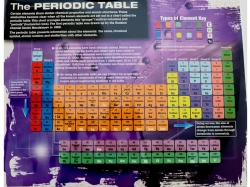




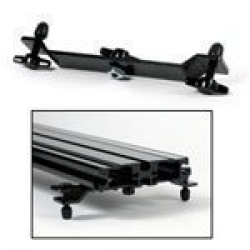

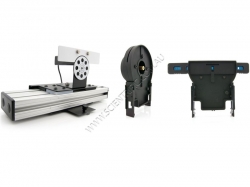
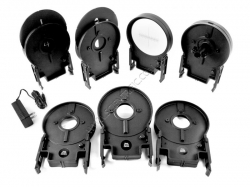
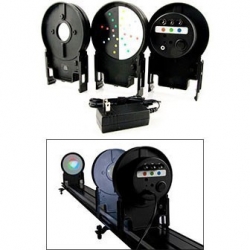
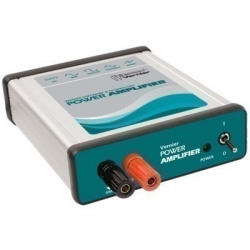
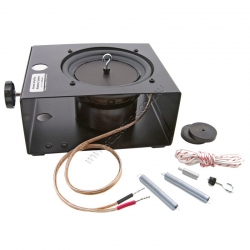


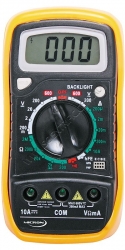

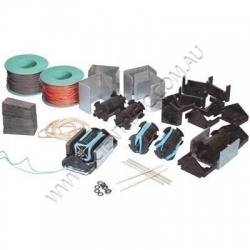
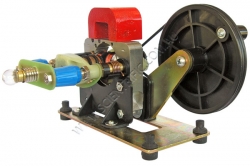
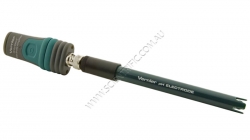
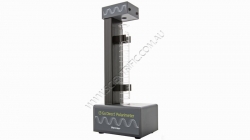
521 results found for 'and'. Prev |1|2|3|4|5|6|7|8|9|10|11|12|13|14|15|16|17|18|19|20|21 | Next | View 100 per page
Low relevance matches: 354 other results may be of interest to you. Show low relevance matches
Curriculum resources related to 'and'
ACSSU184 Year 10 Biological SciencesDNA - The transmission of heritable characteristics from one generation to the next involves DNA and genes ACSSU185 Year 10 Biological Sciences
Evolution - The theory of evolution by natural selection explains the diversity of living things and is supported by a range of scientific evidence ACSSU004 Foundation Earth and Space Sciences
Weather and Climate - Daily and seasonal changes in our environment, including the weather, affect everyday life ACSSU002 Foundation Biological Sciences
Living Things - Living things have basic needs, including food and water ACSSU005 Foundation Physical Sciences
Forces and Moving - The way objects move depends on a variety of factors including their size and shape ACSSU019 Year 1 Earth and Space Sciences
Weather and Climate - Observable changes occur in the sky and landscape ACSSU020 Year 1 Physical Sciences
Light and Sound - Light and sound are produced by a range of sources and can be sensed ACSSU030 Year 2 Biological Sciences
Life Cycles - Living things grow, change and have offspring similar to themselves ACSSU032 Year 2 Earth and Space Sciences
Water - Earth’s resources, including water, are used in a variety of ways ACSSU033 Year 2 Physical Sciences
Forces and Moving - A push or a pull affects how an object moves or changes shape ACSSU043 Year 5 Biological Sciences
Adaptations - Living things have structural features and adaptations that help them to survive in their environment ACSSU044 Year 3 Biological Sciences
Living Things - Living things can be grouped on the basis of observable features and can be distinguished from nonliving ACSSU046 Year 3 Chemical Sciences
Solids Liquids Gases - A change of state between solid and liquid can be caused by adding or removing heat ACSSU048 Year 3 Earth and Space Sciences
Earth Moon Sun - Earth’s rotation on its axis causes regular changes, including night and day ACSSU049 Year 3 Physical Sciences
Heat - Heat can be produced in many ways and can move from one object to another ACSSU073 Year 4 Biological Sciences
Animal Survival - Living things, including plants and animals, depend on each other and the environment to survive ACSSU074 Year 4 Chemical Sciences
Materials - Natural and processed materials have a range of physical properties; These properties can influence their use ACSSU075 Year 4 Earth and Space Sciences
Earth Changes - Sudden geological changes or extreme weather conditions can affect Earth’s surface ACSSU076 Year 4 Physical Sciences
Forces and Moving - Forces can be exerted by one object on another through direct contact or from a distance ACSSU077 Year 5 Chemical Sciences
Solids Liquids Gases - Solids, liquids and gases have different observable properties and behave in different ways ACSSU078 Year 5 Earth and Space Sciences
Earth Moon Sun - The Earth is part of a system of planets orbiting around a star (the sun) ACSSU080 Year 5 Physical Sciences
Light and Sound - Light from a source forms shadows and can be absorbed, reflected and refracted ACSSU094 Year 6 Biological Sciences
Adaptations - The growth and survival of living things are affected by the physical conditions of their environment ACSSU095 Year 6 Chemical Sciences
Chemical Changes - Changes to materials can be reversible, such as melting, freezing, evaporating; or irreversible, such as burning and rusting ACSSU096 Year 6 Earth and Space Sciences
Earth Changes - Sudden geological changes or extreme weather conditions can affect Earth’s surface ACSSU097 Year 6 Physical Sciences
Electrical Circuits - Electrical energy can be transferred and transformed in electrical circuits and can be generated from a range of sources ACSSU112 Year 7 Biological Sciences
Food webs - Interactions between organisms, including the effects of human activities can be represented by food chains and food webs ACSSU115 Year 7 Earth and Space Sciences
Earth Moon Sun - Predictable phenomena on Earth, including seasons and eclipses, are caused by the relative positions of the sun, Earth and the moon ACSSU116 Year 7 Earth and Space Sciences
Earth Resources - Some of Earth’s resources are renewable, but others are non renewable ACSSU117 Year 7 Physical Sciences
Forces and Machines - Change to an object’s motion is caused by unbalanced forces, including Earth’s gravitational attraction, acting on the object ACSSU149 Year 8 Biological Sciences
Cells - Cells are the basic units of living things and have specialised structures and functions ACSSU150 Year 8 Biological Sciences
Organ Systems - Multi-cellular organisms contain systems of organs that carry out specialised functions that enable them to survive and reproduce ACSSU151 Year 8 Chemical Sciences
Matter and Particles - The properties of the different states of matter can be explained in terms of the motion and arrangement of particles ACSSU152 Year 8 Chemical Sciences
Matter and Particles - Differences between elements, compounds and mixtures can be described at a particle level ACSSU153 Year 8 Earth and Space Sciences
Rocks and Minerals - Sedimentary, igneous and metamorphic rocks contain minerals and are formed by processes that occur within Earth over a variety of timescales ACSSU155 Year 8 Physical Sciences
Energy Forms - Energy appears in different forms, including movement (kinetic energy), heat and potential energy, and energy transformations and transfers cause change within systems ACSSU175 Year 9 Biological Sciences
Organ Systems - Multi-cellular organisms rely on coordinated and interdependent internal systems to respond to changes to their environment ACSSU176 Year 9 Biological Sciences
Ecology - Ecosystems consist of communities of interdependent organisms and abiotic components of the environment; matter and energy flow through these systems ACSSU177 Year 9 Chemical Sciences
Atomic Models - All matter is made of atoms which are composed of protons, neutrons and electrons; natural radioactivity arises from the decay of nuclei in atoms ACSSU179 Year 9 Chemical Sciences
Chemical Reactions - Chemical reactions, including combustion and the reactions of acids, are important in both non-living and living systems and involve energy transfer ACSSU180 Year 9 Earth and Space Sciences
Plate Tectonics - The theory of plate tectonics explains global patterns of geological activity and continental movement ACSSU182 Year 9 Physical Sciences
Energy Transfer - Energy transfer through different mediums can be explained using wave and particle models ACSSU186 Year 10 Chemical Sciences
Periodic table - The atomic structure and properties of elements are used to organise them in the Periodic Table ACSSU187 Year 10 Chemical Sciences
Chemical Reactions - Different types of chemical reactions are used to produce a range of products and can occur at different rates ACSSU188 Year 10 Earth and Space Sciences
Universe - The universe contains features including galaxies, stars and solar systems and the Big Bang theory can be used to explain the origin the universe ACSSU189 Year 10 Earth and Space Sciences
Global Systems - Global systems, including the carbon cycle, rely on interactions involving the biosphere, lithosphere, hydrosphere and atmosphere ACSSU190 Year 10 Physical Sciences
Energy Conservation - Energy conservation in a system can be explained by describing energy transfers and transformations ACSSU229 Year 10 Physical Sciences
Forces and Motion - The motion of objects can be described and predicted using the laws of physics ACSBL019 Year 11 Biodiversity and the interconnectedness of life
Describing biodiversity - Ecosystems are diverse, composed of varied habitats and can be described in terms of their component species, species interactions and the abiotic factors that make up the environment ACSBL021 Year 11 Biodiversity and the interconnectedness of life
Describing biodiversity - In addition to biotic factors, abiotic factors including climate and substrate can be used to and classify environments ACSBL029 Year 11 Biodiversity and the interconnectedness of life
Ecosystem dynamics - Models of ecosystem interactions (for example, food webs, successional models) can be used to predict the impact of change and are based on interpretation of and extrapolation from sample data (for example, data derived from ecosystem surveying techniques ACSBL045 Year 11 Cells and multicellular organism
Cells as the basis of life - The cell membrane separates the cell from its surroundings and controls the exchange of materials, including gases, nutrients and wastes, between the cell and its environment ACSBL046 Year 11 Cells and multicellular organism
Cells as the basis of life - Movement of materials across membranes occurs via diffusion, osmosis, active transport and/or endocytosis ACSBL047 Year 11 Cells and multicellular organism
Cells as the basis of life - Factors that affect exchange of materials across membranes include the surface-area-to-volume ratio of the cell, concentration gradients, and the physical and chemical nature of the materials being exchanged ACSBL085 Year 12 Heredity and continuity of life
DNA genes and the continuity of life - Frequencies of genotypes and phenotypes of offspring can be predicted using probability models, including Punnett squares, and by taking into consideration patterns of inheritance, including the effects of dominant, autosomal and sex-linked alleles and mu ACSBL090 Year 12 Heredity and continuity of life
Continuity of life on Earth - Natural selection occurs when selection pressures in the environment confer a selective advantage on a specific phenotype to enhance its survival and reproduction; this results in changes in allele frequency in the gene pool of a population ACSBL091 Year 12 Heredity and continuity of life
Continuity of life on Earth - In additional to environmental selection pressures, mutation, gene flow and genetic drift can contribute to changes in allele frequency in a population gene pool and results in microevolutionary change ACSBL110 Year 12 Maintaining the internal environment
Homeostasis - Homeostasis involves a stimulus response model in which change in external or internal environmental conditions is detected and appropriate responses occur via negative feedback; in vertebrates, receptors and effectors are linked via a control centre by n ACSBL111 Year 12 Maintaining the internal environment
Homeostasis - Changes in an organism’s metabolic activity, in addition to structural features and changes in physiological processes and behaviour, enable the organism to maintain its internal environment within tolerance limits ACSBL115 Year 12 Maintaining the internal environment
Homeostasis - Animals, whether osmo-regulators or osmo-conformers, and plants, have various mechanisms to maintain water balance that involve structural features, and behavioural, physiological and homeostatic responses ACSBL117 Year 12 Maintaining the internal environment
Infectious disease - Pathogens include prions, viruses, bacteria, fungi, protists and parasites ACSBL118 Year 12 Maintaining the internal environment
Infectious disease - Pathogens have adaptations that facilitate their entry into cells and tissues and their transmission between hosts; transmission occurs by various mechanisms including through direct contact, contact with body fluids, and via contaminated food, water or d ACSCH016 Year 11 Chemical fundamentals
Properties and structure of atoms - Trends in the observable properties of elements are evident in periods and groups in the periodic table ACSCH018 Year 11 Chemical fundamentals
Properties and structure of atoms - Atoms can be modelled as a nucleus surrounded by electrons in distinct energy levels, held together by electrostatic forces of attraction between the nucleus and electrons; atoms can be represented using electron shell diagrams (all electron shells or val ACSCH019 Year 11 Chemical fundamentals
Properties and structure of atoms - Flame tests and atomic absorption spectroscopy are analytical techniques that can be used to identify elements; these methods rely on electron transfer between atomic energy levels ACSCH025 Year 11 Chemical fundamentals
Properties and structure of materials - Materials are either pure substances with distinct measurable properties (for example, melting and boiling point, reactivity, strength, density) or mixtures with properties dependent on the identity and relative amounts of the substances that make up the ACSCH026 Year 11 Chemical fundamentals
Properties and structure of materials - Differences in the properties of substances in a mixture, such as particle size, solubility, magnetism, density, electrostatic attraction, melting point and boiling point, can be used to separate them ACSCH030 Year 11 Chemical fundamentals
Properties and structure of materials - Ions are atoms or groups of atoms that are electrically charged due to an imbalance in the number of electrons and protons; ions are represented by formulae which include the number of constituent atoms and the charge of the ion (for example, O2–, SO42–) ACSCH032 Year 11 Chemical fundamentals
Properties and structure of materials - The characteristic properties of metals (for example, malleability, thermal conductivity, electrical conductivity) are explained by modelling metallic bonding as a regular arrangement of positive ions (cations) made stable by electrostatic forces of attra ACSCH036 Year 11 Chemical fundamentals
Chemical reactions - All chemical reactions involve the creation of new substances and associated energy transformations, commonly observable as changes in the temperature of the surroundings and/or the emission of light ACSCH037 Year 11 Chemical fundamentals
Chemical reactions - Endothermic and exothermic reactions can be explained in terms of the Law of Conservation of Energy and the breaking and reforming of bonds; heat energy released or absorbed can be represented in thermochemical equations ACSCH039 Year 11 Chemical fundamentals
Chemical reactions - A mole is a precisely defined quantity of matter equal to Avogadro’s number of particles; the mole concept and the Law of Conservation of Mass can be used to calculate the mass of reactants and products in a chemical reaction ACSCH056 Year 11 Molecular interactions and reactions
Intermolecular forces and gases - The shapes of molecules can be explained and predicted using three dimensional representations of electrons as charge clouds and using valence shell electron pair repulsion (VSEPR) theory ACSCH059 Year 11 Molecular interactions and reactions
Intermolecular forces and gases - Data from chromatography techniques (for example, thin layer, gas and highperformance liquid chromatography) can be used to determine the composition and purity of substances; the separation of the components is caused by the variation of strength of the ACSCH060 Year 11 Molecular interactions and reactions
Intermolecular forces and gases - The behaviour of gases, including the qualitative relationships between pressure, temperature and volume, can be explained using kinetic theory ACSCH061 Year 11 Molecular interactions and reactions
Aqueous solutions and acidity - Water is a key substance in a range of chemical systems because of its unique properties, including its boiling point, density in solid and liquid phases, surface tension, and ability to act as a solvent ACSCH063 Year 11 Molecular interactions and reactions
Aqueous solutions and acidity - The concentration of a solution is defined as the amount of solute divided by the amount of solution; this can be represented in a variety of ways including by the number of moles of the solute per litre of solution (mol L1) and the mass of the solute pe ACSCH064 Year 11 Molecular interactions and reactions
Aqueous solutions and acidity - The presence of specific ions in solutions can be identified using analytical techniques based on chemical reactions, including precipitation and acidbase reactions ACSCH065 Year 11 Molecular interactions and reactions
Aqueous solutions and acidity - The solubility of substances in water, including ionic and molecular substances, can be explained by the intermolecular forces between species in the substances and water molecules, and is affected by changes in temperature ACSCH066 Year 11 Molecular interactions and reactions
Aqueous solutions and acidity - The pH scale is used to compare the levels of acidity or alkalinity of aqueous solutions; the pH is dependent on the concentration of hydrogen ions in the solution ACSCH068 Year 11 Molecular interactions and reactions
Rates of chemical reactions - Varying the conditions present during chemical reactions can affect the rate of the reaction and in some cases the identity of the products ACSCH069 Year 11 Molecular interactions and reactions
Rates of chemical reactions - The rate of chemical reactions can be quantified by measuring the rate of formation of products or the depletion of reactants ACSCH073 Year 11 Molecular interactions and reactions
Rates of chemical reactions - Catalysts, including enzymes and metal nanoparticles, affect the rate of certain reactions by providing an alternative reaction pathway with a reduced activation energy, hence increasing the proportion of collisions that lead to a chemical change ACSCH091 Year 12 Equilibrium acids and redox reactions
Chemical equilibrium systems - Over time, physical changes and reversible chemical reactions reach a state of dynamic equilibrium in a closed system, with the relative concentrations of products and reactants defining the position of equilibrium ACSCH096 Year 12 Equilibrium acids and redox reactions
Chemical equilibrium systems - Equilibrium position can be predicted qualitatively using equilibrium constants ACSCH097 Year 12 Equilibrium acids and redox reactions
Chemical equilibrium systems - Acids are substances that can act as proton (hydrogen ion) donors and can be classified as monoprotic or polyprotic depending on the number of protons donated by each molecule of the acid ACSCH098 Year 12 Equilibrium acids and redox reactions
Chemical equilibrium systems - The strength of acids is explained by the degree of ionisation at equilibrium in aqueous solution, which can be represented with chemical equations and equilibrium constants (Ka) ACSCH099 Year 12 Equilibrium acids and redox reactions
Chemical equilibrium systems - The relationship between acids and bases in equilibrium systems can be explained using the Brønsted Lowry model and represented using chemical equations that illustrate the transfer of hydrogen ions ACSCH100 Year 12 Equilibrium acids and redox reactions
Chemical equilibrium systems - The pH scale is a logarithmic scale and the pH of a solution can be calculated from the concentration of hydrogen ions; Kw can be used to calculate the concentration of hydrogen ions from the concentration of hydroxide ions in a solution ACSCH101 Year 12 Equilibrium acids and redox reactions
Chemical equilibrium systems - Acidbase indicators are weak acids or bases where the acidic form is of a different colour to the basic form ACSCH102 Year 12 Equilibrium acids and redox reactions
Chemical equilibrium systems - Volumetric analysis methods involving acidbase reactions rely on the identification of an equivalence point by measuring the associated change in pH, using chemical indicators or pH meters, to reveal an observable end point ACSCH103 Year 12 Equilibrium acids and redox reactions
Oxidation and reduction - A range of reactions, including displacement reactions of metals, combustion, corrosion, and electrochemical processes, can be modelled as redox reactions involving oxidation of one substance and reduction of another substance ACSCH104 Year 12 Equilibrium acids and redox reactions
Oxidation and reduction - Oxidation can be modelled as the loss of electrons from a chemical species, and reduction can be modelled as the gain of electrons by a chemical species; these processes can be represented using half equations ACSCH106 Year 12 Equilibrium acids and redox reactions
Oxidation and reduction - The relative strength of oxidising and reducing agents can be determined by comparing standard electrode potentials ACSCH107 Year 12 Equilibrium acids and redox reactions
Oxidation and reduction - Electrochemical cells, including galvanic and electrolytic cells, consist of oxidation and reduction half reactions connected via an external circuit that allows electrons to move from the anode (oxidation reaction) to the cathode (reduction reaction) ACSCH108 Year 12 Equilibrium acids and redox reactions
Oxidation and reduction - Galvanic cells, including fuel cells, generate an electrical potential difference from a spontaneous redox reaction; they can be represented as cell diagrams including anode and cathode halfequations ACSCH110 Year 12 Equilibrium acids and redox reactions
Oxidation and reduction - Cell potentials at standard conditions can be calculated from standard electrode potentials; these values can be used to compare cells constructed from different materials ACSCH130 Year 12 Structure synthesis and design
Properties and structure of organic materials - Data from analytical techniques, including mass spectrometry, xray crystallography and infrared spectroscopy, can be used to determine the structure of organic molecules, often using evidence from more than one technique ACSCH131 Year 12 Structure synthesis and design
Chemical synthesis and design - Chemical synthesis involves the selection of particular reagents to form a product with specific properties (for example, pharmaceuticals, fuels, cosmetics, cleaning products) ACSCH132 Year 12 Structure synthesis and design
Chemical synthesis and design - Designing chemical synthesis processes involves constructing reaction pathways that may include more than one chemical reaction ACSCH133 Year 12 Structure synthesis and design
Chemical synthesis and design - Designing chemical synthesis processes includes identifying reagents and reaction conditions in order to maximise yield and purity of product ACSPH016 Year 11 Thermal nuclear and electrical physics
Heating processes - Heat transfer occurs between and within systems by conduction, convection and/or radiation ACSPH020 Year 11 Thermal nuclear and electrical physics
Heating processes - Provided a substance does not change state, its temperature change is proportional to the amount of energy added to or removed from the substance; the constant of proportionality describes the heat capacity of the substance ACSPH022 Year 11 Thermal nuclear and electrical physics
Heating processes - Two systems in contact transfer energy between particles so that eventually the systems reach the same temperature; that is, they are in thermal equilibrium ACSPH028 Year 11 Thermal nuclear and electrical physics
Ionising radiation and nuclear reactions - Some nuclides are unstable and spontaneously decay, emitting alpha, beta and/or gamma radiation over time until they become stable nuclides ACSPH029 Year 11 Thermal nuclear and electrical physics
Ionising radiation and nuclear reactions - Each species of radionuclide has a specific halflife ACSPH030 Year 11 Thermal nuclear and electrical physics
Ionising radiation and nuclear reactions - Alpha, beta and gamma radiation have sufficient energy to ionise atoms ACSPH039 Year 11 Thermal nuclear and electrical physics
Electrical circuits - Energy is conserved in the energy transfers and transformations that occur in an electrical circuit ACSPH040 Year 11 Thermal nuclear and electrical physics
Electrical circuits - The energy available to charges moving in an electrical circuit is measured using electric potential difference, which is defined as the change in potential energy per unit charge between two defined points in the circuit ACSPH041 Year 11 Thermal nuclear and electrical physics
Electrical circuits - Energy is required to separate positive and negative charge carriers; charge separation produces an electrical potential difference that can be used to drive current in circuits ACSPH042 Year 11 Thermal nuclear and electrical physics
Electrical circuits - Power is the rate at which energy is transformed by a circuit component; power enables quantitative analysis of energy transformations in the circuit ACSPH043 Year 11 Thermal nuclear and electrical physics
Electrical circuits - Resistance for ohmic and nonohmic components is defined as the ratio of potential difference across the component to the current in the component ACSPH044 Year 11 Thermal nuclear and electrical physics
Electrical circuits - Circuit analysis and design involve calculation of the potential difference across, the current in, and the power supplied to, components in series, parallel and series/parallel circuits ACSPH060 Year 11 Linear Motion and Waves
Linear motion and force - Uniformly accelerated motion is described in terms of relationships between measurable scalar and vector quantities, including displacement, speed, velocity and acceleration ACSPH061 Year 11 Linear Motion and Waves
Linear motion and force - Representations, including graphs and vectors, and/or equations of motion, can be used qualitatively and quantitatively to describe and predict linear motion ACSPH062 Year 11 Linear Motion and Waves
Linear motion and force - Vertical motion is analysed by assuming the acceleration due to gravity is constant near Earth’s surface ACSPH063 Year 11 Linear Motion and Waves
Linear motion and force - Newton’s Three Laws of Motion describe the relationship between the force or forces acting on an object, modelled as a point mass, and the motion of the object due to the application of the force or forces ACSPH064 Year 11 Linear Motion and Waves
Linear motion and force - Momentum is a property of moving objects; it is conserved in a closed system and may be transferred from one object to another when a force acts over a time interval ACSPH065 Year 11 Linear Motion and Waves
Linear motion and force - Energy is conserved in isolated systems and is transferred from one object to another when a force is applied over a distance; this causes work to be done and changes to kinetic and/or potential energy of objects ACSPH066 Year 11 Linear Motion and Waves
Linear motion and force - Collisions may be elastic and inelastic; kinetic energy is conserved in elastic collisions ACSPH069 Year 11 Linear Motion and Waves
Waves - Waves may be represented by time and displacement wave diagrams and described in terms of relationships between measurable quantities, including period, amplitude, wavelength, frequency and velocity ACSPH072 Year 11 Linear Motion and Waves
Waves - The superposition of waves in a medium may lead to the formation of standing waves and interference phenomena, including standing waves in pipes and on stretched strings ACSPH073 Year 11 Linear Motion and Waves
Waves - A mechanical system resonates when it is driven at one of its natural frequencies of oscillation; energy is transferred efficiently into systems under these conditions ACSPH076 Year 11 Linear Motion and Waves
Waves - A wave model explains a wide range of lightrelated phenomena including reflection, refraction, total internal reflection, dispersion, diffraction and interference; a transverse wave model is required to explain polarisation ACSPH099 Year 12 Gravity and electromagnetism
Gravity and motion - Projectile motion can be analysed quantitatively by treating the horizontal and vertical components of the motion independently ACSPH102 Year 12 Gravity and electromagnetism
Electromagnetism - Electrostatically charged objects exert a force upon one another; the magnitude of this force can be calculated using Coulomb’s Law ACSPH106 Year 12 Gravity and electromagnetism
Electromagnetism - Currentcarrying wires are surrounded by magnetic fields; these fields are utilised in solenoids and electromagnets ACSPH107 Year 12 Gravity and electromagnetism
Electromagnetism - The strength of the magnetic field produced by a current is called the magnetic flux density ACSPH110 Year 12 Gravity and electromagnetism
Electromagnetism - A changing magnetic flux induces a potential difference; this process of electromagnetic induction is used in stepup and stepdown transformers, DC and AC generators, and AC induction motors ACSPH111 Year 12 Gravity and electromagnetism
Electromagnetism - Conservation of energy, expressed as Lenz’s Law of electromagnetic induction, is used to determine the direction of induced current ACSPH136 Year 12 Revolutions in modern physics
Quantum theory - On the atomic level, electromagnetic radiation is emitted or absorbed in discrete packets called photons; the energy of a photon is proportional to its frequency; and the constant of proportionality, Planck’s constant, can be determined experimentally (fo ACSPH137 Year 12 Revolutions in modern physics
Quantum theory - A wide range of phenomena, including black body radiation and the photoelectric effect, are explained using the concept of light quanta ACSPH138 Year 12 Revolutions in modern physics
Quantum theory - Atoms of an element emit and absorb specific wavelengths of light that are unique to that element; this is the basis of spectral analysis ACSPH139 Year 12 Revolutions in modern physics
Quantum theory - The Bohr model of the hydrogen atom integrates light quanta and atomic energy states to explain the specific wavelengths in the hydrogen spectrum and in the spectra of other simple atoms; the Bohr model enables line spectra to be correlated with atomic en ACSBL052 Year 11 Biodiversity and the interconnectedness of life
Ecosystem dynamics - Photosynthesis is a biochemical process that in plant cells occurs in the chloroplast and that uses light energy to organic compounds; the overall process can be represented as a balanced chemical equation ACSBL053 Year 11 Biodiversity and the interconnectedness of life
Ecosystem dynamics - Cellular respiration is a biochemical process that occurs in different locations in the cytosol and mitochondria and metabolises organic compounds, aerobically or anaerobically, to release useable energy in the form of ATP; the overall process can be repr ACSCH134 Year 12 Structure synthesis and design
Chemical synthesis and design - The yield of a chemical synthesis reaction can be calculated by comparing stoichiometric quantities with actual quantities ACSPH108 Year 12 Gravity and electromagnetism
Electromagnetism - Magnets, magnetic materials, moving charges and currentcarrying wires experience a force in a magnetic field; this force is utilised in DC electric motors ACSPH109 Year 12 Gravity and electromagnetism
Electromagnetism - Magnetic flux is defined in terms of magnetic flux density and area ACSPH021 Year 11 Thermal nuclear and electrical physics
Heating processes - Change of state involves internal energy changes to form or break bonds between atoms or molecules; latent heat is the energy required to be added to or removed from a system to change the state of the system ACSPH100 Year 12 Gravity and electromagnetism
Gravity and motion - When an object experiences a net force of constant magnitude perpendicular to its velocity, it will undergo uniform circular motion, including circular motion on a horizontal plane and around a banked track ACSCH031 Year 11 Chemical fundamentals
Properties and structure of materials - The properties of ionic compounds (for example, high melting point, brittleness, ability to conduct electricity when liquid or in solution) are explained by modelling ionic bonding as ions arranged in a crystalline lattice structure with forces of attract ACSCH027 Year 11 Chemical fundamentals
Properties and structure of atoms - The type of bonding within substances explains their physical properties, including melting and boiling point, conductivity of both electricity and heat, strength and hardness ACSCH137 Year 12 Structure synthesis and design
Chemical synthesis and design - Fuels (for example, biodiesel, ethanol, hydrogen) can be synthesised from organic or inorganic sources using a range of chemical reactions including addition, oxidation and esterification ACSPH067 Year 11 Linear Motion and Waves
Waves - Waves are periodic oscillations that transfer energy from one point to another ACSPH068 Year 11 Linear Motion and Waves
Waves - Longitudinal and transverse waves are distinguished by the relationship between the direction of oscillation relative to the direction of the wave velocity ACSPH070 Year 11 Linear Motion and Waves
Waves - Mechanical waves transfer energy through a medium; mechanical waves may oscillate the medium or oscillate the pressure within the medium ACSPH071 Year 11 Linear Motion and Waves
Waves - The mechanical wave model can be used to explain phenomena related to reflection and refraction ACSPH074 Year 11 Linear Motion and Waves
Waves - Light exhibits many wave properties; however, it cannot be modelled as a mechanical wave because it can travel through a vacuum ACSPH075 Year 11 Linear Motion and Waves
Waves - A ray model of light may be used to describe reflection, refraction and image formation from lenses and mirrors ACSPH077 Year 11 Linear Motion and Waves
Waves - The speed of light is finite and many orders of magnitude greater than the speed of mechanical waves (for example, sound and water waves); its intensity decreases in an inverse square relationship with distance from a point source ACSPH098 Year 12 Gravity and electromagnetism
Gravity and motion - The vector nature of the gravitational force can be used to analyse motion on inclined planes by considering the components of the gravitational force (that is, weight) parallel and perpendicular to the plane ACSPH140 Year 12 Revolutions in modern physics
Quantum theory - On the atomic level, energy and matter exhibit the characteristics of both waves and particles ACSPH135 Year 12 Revolutions in modern physics
Quantum theory - Atomic phenomena and the interaction of light with matter indicate that states of matter and energy are quantised into discrete values ACSPH103 Year 12 Gravity and electromagnetism
Electromagnetism - A positively charged body placed in an electric field will experience a force in the direction of the field; the strength of the electric field is defined as the force per unit charge ACSPH104 Year 12 Gravity and electromagnetism
Electromagnetism - Point charges and charged objects produce an electric field in the space that surrounds them; field theory attributes the electrostatic force on a point charge or charged body to the presence of an electric field ACSPH105 Year 12 Gravity and electromagnetism
Electromagnetism - When a charged body moves or is moved from one point to another in an electric field and its potential energy changes, work is done on or by the field
Products related to 'and'

Vernier SpectroVis Optical Fiber
VERNIER OPTICAL FIBRE FOR SPECTROVIS PLUS
A special optical fibre cable used for emission experiments with the Vernier SpectroVis or SpectroVis Plus spectrometer.
Both these Vernier spectrometers are discontinued and no longer available.
NOTE: SVIS-FIBER is NOT ...
Order code: SVIS-FIBER
Whiteboard Marker Auspen - Bottle of Blue Refill Ink
23ml bottle of blue refill ink for Auspen whiteboard markers.
Black, red, orange, green and purple ink refills are also available.
Order code: SC2121
Whiteboard Marker Auspen - Bottle of Red Refill Ink
23ml bottle of red refill ink for Auspen whiteboard markers.
Black, blue, orange, green and purple ink refills are also available.
Order code: SC2122

Periodic Table of the Elements Poster Set of 8
Last 2 sets available
PERIODIC TABLE OF THE ELEMENTS POSTER SET OF 8
Take a closer look at key aspects of the elements, their properties and their applications. Understanding the chemical elements and the basic principles of chemistry is essential in all areas of scientific study.
Each lami...
Order code: 332078
Whiteboard Marker Auspen - Bottle of Green Refill Ink
23ml bottle of green refill ink for Auspen whiteboard markers.
Black, blue, red, orange and purple ink refills are also available.
Order code: SC2124

Vernier Go!Motion Data Logger with Logger Lite software
VERNIER GO!MOTION
Go!Motion is Vernier's motion detector that connects directly to a computer or Chromebook USB port eliminating the need for an additional data-collection interface, making it fast and easy to set up experiments and start collecting a wide range of real-t...
Order code: GO-MOT



Vernier Go!Motion Data Logger Teacher Pack of 8
VERNIER GO!MOTION DATA LOGGER Teacher Pack of 8.
Save money when you purchase the Vernier Go!Motion Teacher Pack which includes eight Go!Motion USB motion detectors.
Go!Motion is Vernier's motion detector that connects directly to a computer or Chromebook USB port elim...
Order code: GO-MOT-TP


Whiteboard Marker Auspen - Bottle of Orange Refill Ink
23ml bottle of orange refill ink for Auspen whiteboard markers.
Black, blue, red, green and purple ink refills are also available.
Order code: SC2125

Vernier NXT Sensor Adapter
Discontinued - only 2 in stock
VERNIER NXT SENSOR ADAPTOR.
The Vernier NXT Sensor Adapter allows Vernier sensors to work on the LEGO® MINDSTORMS® NXT and EV3 robotics system. Listed below are compatible sensors for measuring everything from temperature, force, light level, UV level, pH and more.
• C...
Order code: BTA-NXT

Vernier Fan Motion Encoder Cart
VERNIER ENCODER FAN CART
The Encoder Fan Cart is a large fan on a light-weight cart. It offers students the ability to perform kinematics and dynamics experiments with constant acceleration, variable mass, variable thrust and variable thrust angle. The cart includes a Mot...
Order code: CART-FEC



Vernier Adjustable Two Foot Leveller
VERNIER ADJUSTABLE TWO FOOT LEVELLER
A replacement leveller to adjust the height of the Vernier track/optics bench.
Two are required to support one track.
The adjustable levelling feet slide onto the end of the track with the nut in the centre slot of the track unders...
Order code: AL-VDS

Vernier Track-to-Track Coupler
VERNIER TRACK TO TRACK COUPLER
Vernier's Track-to-Track Coupler rigidly connects two Vernier tracks for larger experiments and demonstrations.
Included are two sets of metal bars with hex bolts and an allen key. The bars are placed in the side channels
of the Vernier t...
Order code: T2T-VDS

Vernier Diffraction Apparatus
VERNIER DIFFRACTION APPARATUS
The Vernier Diffraction Apparatus lets students create, view and measure diffraction and interference patterns. The included Red Diffraction Laser provides a clean monochromatic light source. Slits are made by depositing metal film on glass, ...
Order code: DAK-INTL

Vernier Optics Expansion Kit
VERNIER OPTICS EXPANSION KIT
Add the Vernier Optics Expansion Kit to your Vernier Dynamics Cart and Track System to conduct optics experiments such as:
• Image formation with lenses
• Light intensity vs. distance
• Inverse-square intensity relationship for light from a...
Order code: OEK-INTL

Vernier Colour Mixer Kit
VERNIER COLOUR MIXER KIT
Experiments in additive and subtractive colour mixing can be easily and conveniently carried out using the Vernier Colour Mixer Kit. The kit consists of a three-colour LED illuminator with power supply, lens and double-sided screen. The intensity ...
Order code: CM-OEK-INTL

Vernier Power Amplifier
VERNIER POWER AMPLIFIER
Use the Vernier Power Amplifier as a power supply for DC and AC circuit investigations or to drive devices such as speakers, lamps and small DC motors.The Power Amplifier takes small input signal – from a LabQuest 2, original LabQuest, or computer ...
Order code: PAMP-EURO

Vernier Power Amplifier Accessory Speaker
VERNIER POWER AMPLIFIER ACCESSORY SPEAKER
This kit includes a speaker and accessories used with the Vernier Power Amplifier to study mechanical waves and springs. The speaker contains a lightweight metal disc glued to the speaker cone. A drive post attached to the metal p...
Order code: PAAS-PAMP

Vernier Stir Station
VERNIER STIR STATION
Vernier's Stir Station is a combination magnetic stirrer and ring stand that efficiently handles beakers and other containers as small as 50mL and as large as one litre (800mL practical capacity). It works efficiently with beakers with a wide range of...
Order code: STIR-INTL

Vernier Go Direct Centripetal Force Apparatus
VERNIER GO DIRECT CENTRIPETAL FORCE APPARATUS
The Vernier Go Direct Centripetal Force Apparatus and Vernier Go Direct Force and Acceleration Sensor (not included) make an ideal combination to explore rotational dynamics.
When students use the Vernier Go Direct Centripe...
Order code: GDX-CFA



Digital Multimeter 19 Ranges Transistor Diode Tester
DIGITAL MULTIMETER 19 RANGES TRANSISTOR DIODE TESTER.
This 3.5 digit digital multimeter features 19 ranges, hFE transistor and diode test function. Backlit screen and data hold functions are great for measuring in the field. Perfect for the cash strapped student or budding enthu...
Order code: SC2254
| Purchase QTY: (Each) | 1+ |
|---|---|
| Scientrific's price | $17.40 |
| Educational special | $17.40 |
| CLICK FOR QTY PRICING | |
| Prices exclude GST and freight | |

Vernier Electrostatics Kit
VERNIER ELECTROSTATICS KIT
The Vernier Electrostatics Kit is an accessory for the Vernier Charge Sensor. The kit allows students to perform a range of experiments in electrostatics including the use of Faraday's pail, quantitative and qualitative measurement of charge, ch...
Order code: ESK-CRG



IEC Electric Motor Kit Hodson Self Build
IEC HODSON MOTOR KITS
The quality Australian designed and manufactured IEC Hodson Motor Kit includes 2 motors individually packed in sturdy plastic storage jars. Designed to teach electromagnetism and how electric motors work, the kits are simple to assemble with b...
Order code: EM2193-201


| Purchase QTY: (Set of 2) | 1+ |
|---|---|
| Scientrific's price | $55.00 |
| Educational special | $50.00 |
| CLICK FOR QTY PRICING | |
| Prices exclude GST and freight | |

IEC Motor Generator Hand Cranked AC/DC
IEC HAND DRIVEN MOTOR/GENERATOR
A compact and strongly built DC electric Motor/Generator that is rotated using the hand-cranked wheel and drive belt
The belt is easily removed when running as a DC Motor.
Can be used with the supplied 'U' shaped magnet or by fitting ...
Order code: EM1758-001



Vernier Go Direct pH Sensor
VERNIER GO DIRECT pH SENSOR
Vernier's Go Direct pH Sensor is a general purpose pH sensor used to monitor the pH of aqueous solutions. It directly connects wirelessly via Bluetooth® or wired via USB to your platform.
The Vernier Go Direct pH Sensor is an important and v...
Order code: GDX-PH



Vernier Go Direct Polarimeter
VERNIER GO DIRECT POLARIMETER
The concept of chirality can be difficult for students to visualize. Vernier's Go Direct Polarimeter provides a visual representation of this concept by measuring the optical rotation of optical isomers such as sugars, amino acids and protein...
Order code: GDX-POL
521 results found for 'and'. Prev |1|2|3|4|5|6|7|8|9|10|11|12|13|14|15|16|17|18|19|20|21 | Next | View 100 per page


